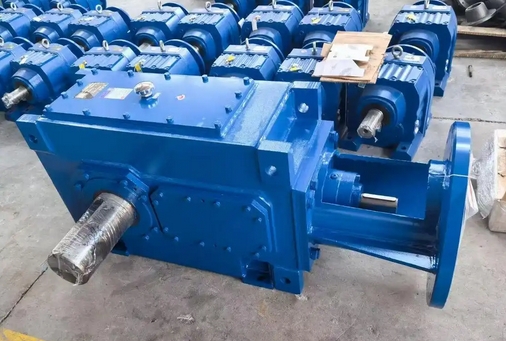What are the methods for determining the oil change cycle of B3SH11B-50-N industrial gearbox
The main methods for determining the oil change cycle of B3SH11B-50-N industrial gearbox are as follows:
Reference equipment manufacturer recommendation: Equipment manufacturers typically provide a recommended oil change cycle based on factors such as gearbox design, materials, manufacturing processes, and expected usage conditions. This is an important reference for determining the oil change cycle, for example, under normal working conditions, it may be recommended to change the oil every certain number of hours of operation or at certain intervals.

Based on running time and experience: For gearboxes with low oil consumption, oil can be changed regularly according to actual experience. The gearbox without water contact has an oil replacement cycle of 4000-5000 hours. If the gearbox has gained some experience in similar working conditions, the oil change cycle can be determined by referring to past situations. For example, if there have been no obvious lubrication problems during previous use and the equipment is in good operating condition, oil can be changed according to the experience cycle; If there has been gear wear, deterioration of oil quality, etc., it is necessary to shorten the oil change cycle.
Change oil according to quality: For larger gear units, a centralized lubrication system is usually used. Due to regular replenishment of oil, oil is often changed according to the deterioration of the oil. By regularly testing the lubricating oil and analyzing its various indicators, the quality and performance changes of the oil can be judged to determine whether oil replacement is necessary. The detection indicators can refer to the petrochemical industry standard NB/SH/T 0586-2010, mainly including the following aspects:
Viscosity: Viscosity is one of the important indicators of lubricating oil, and excessive changes in viscosity may affect its lubrication performance. If the viscosity of the lubricating oil is detected to exceed the specified range, such as an increase in viscosity causing a decrease in fluidity and inability to lubricate components in a timely manner, or a decrease in viscosity causing the oil film thickness to become thinner and unable to effectively carry the load, it is necessary to consider changing the oil.
Moisture: Moisture can damage the oil film, reduce the viscosity of lubricating oil, accelerate the oxidation and deterioration of oil, and cause corrosion of metal parts. When the moisture content in the lubricating oil exceeds a certain limit, the oil should be changed in a timely manner.
Acid value: A high acid value indicates that the lubricating oil has undergone a certain degree of oxidation and deterioration, which can corrode metal parts and increase the possibility of scaling. If the acid value exceeds the allowable range, it usually means that the lubricating oil needs to be replaced.
Mechanical impurities: High levels of impurities can cause abnormal wear and tear of equipment. When the content of mechanical impurities exceeds the specified standards, or when a large amount of metal debris, dust, and other impurities are found in the oil, oil replacement should be considered.
Iron content: The iron content can reflect the wear of metal components such as gears. If the iron content significantly increases, it may indicate excessive wear, and other indicators need to be combined to comprehensively determine whether oil change is necessary.

